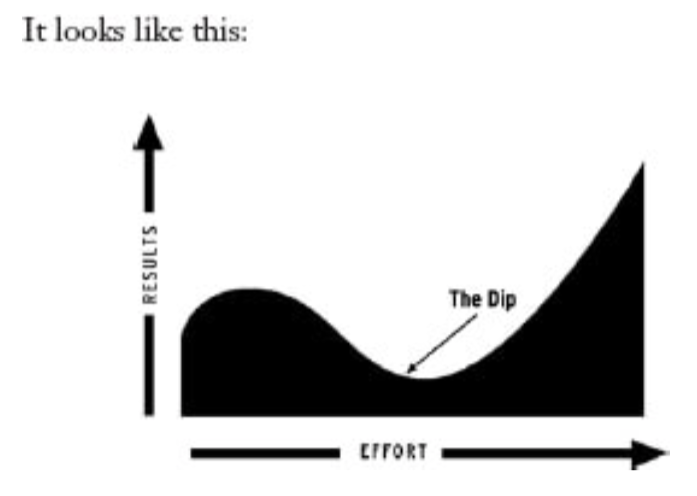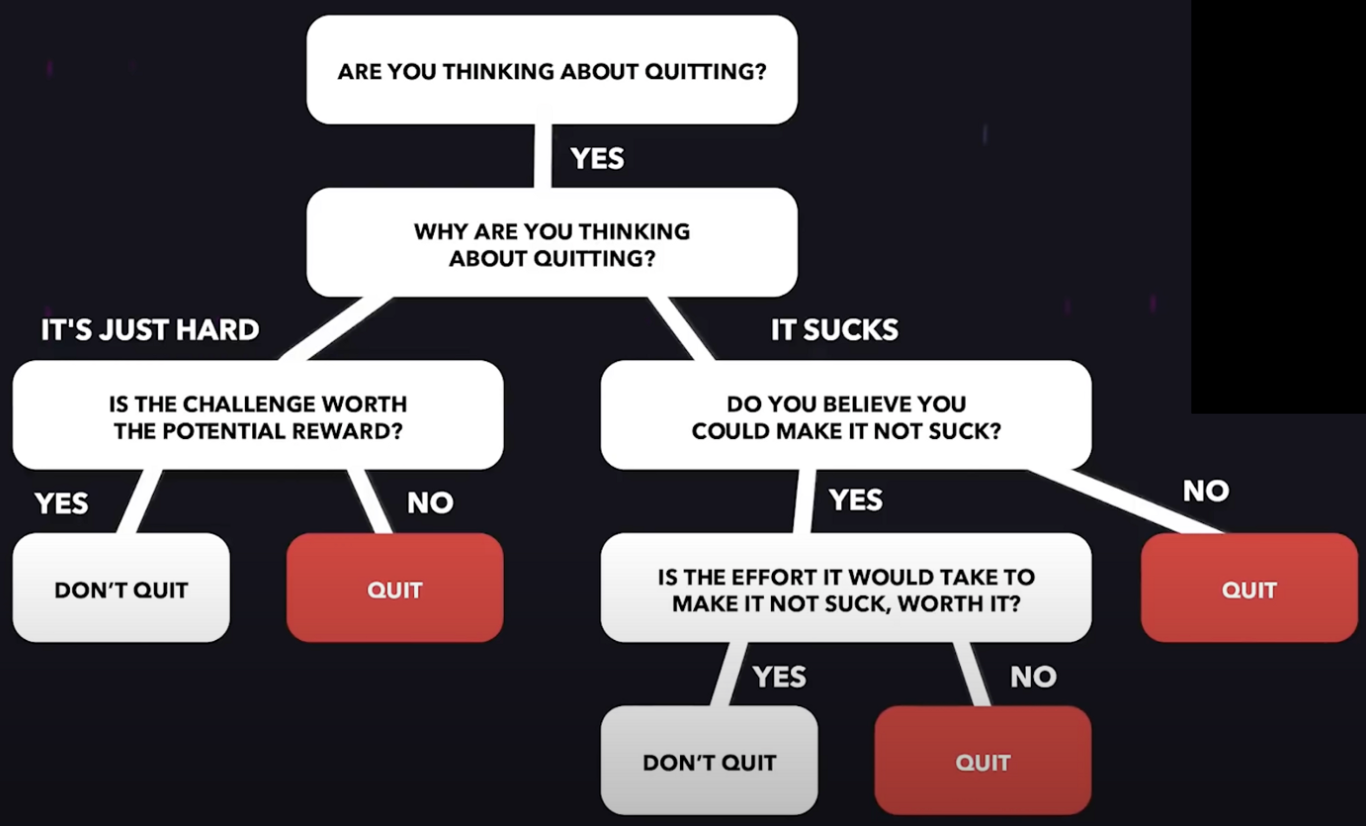Hey - it’s Matt.
I thought about quitting my new business this week.
Procrastinating and a lack of progress made me rethink whether I made the right choice about starting the business in the first place.
As entrepreneurs, we’re full of ideas and ready to start new projects. With the ones that we pursue, the challenge is deciding when to push through the hard times and when to quit.
The Dip
When you act on any new idea it’s fun, exciting, and interesting.
You make a lot of progress in the early stages because executing the new idea keeps you motivated, engaged, and on task.
Then you reach the period between starting and when you’ve truly mastered the execution of your new idea.
Seth Godin calls this stage ‘The Dip’. This stage feels like a really long slog.

I found myself entering ‘The Dip’ this week. I’ve been working on my new business for the last 3 months with very little visible progress. It started to feel like a slog. However, as Godin explains, without the slog you’ll never reach the breakthrough that leads to success.
I was faced with two options:
- Realize that things aren’t working and quit the business to focus my energy elsewhere; or
- Push through ‘The Dip’, deal with the tough times, make it out the other side and achieve success.
Strategic Quitting
I’ve quit 3 different projects in the last 12 months. All of them while entering ‘The Dip’.
I quit because the challenges I was facing were not worth the potential reward.
Quitting these projects enabled me to start my new business.
Even though quitting is associated with negativity, it can be strategic. It can be an impactful way to navigate your business, your career, and your life.
”Quitting the projects that don’t go anywhere is essential if you want to stick out the right ones.”
- Seth Godin
Quitting doesn’t mean that you’re quitting your long-term strategy. You’re just giving up on one particular approach or tactic that isn’t working out.
Contrary to popular opinion, quitting is for winners.
— Steven Bartlett (@SteveBartlettSC) January 23, 2020
Knowing when to quit, change direction, leave a toxic situation, demand more from life, give up on something that wasn't working and move on, is a very important skill that people who win at life all seem to have.
The Quitting Framework
Quitting is never easy.
People are scared of quitting because it’s acknowledging something doesn’t work and needs to change. It’s easier to accept mediocrity than to quit.
Knowing when to quit is a big life skill.
In his book Happy Sexy Millionaire, Steven Bartlett introduced a quitting framework to help with quitting.
Here’s how it works:

Are you a failure?
Quitting and failure are not the same.
Strategic quitting is a conscious decision that you make. You assess your situation, the available options and decide that quitting is the best move.
Failure means giving up. You’ve exhausted all resources and there are no other options available.
”Failing, on the other hand, means that your dream is over.”
- Seth Godin
Pushing through The Dip
After reviewing the situation with my new business and applying the Quitting Framework, I’ve decided to push through ‘The Dip’.
Overcoming my current challenges is well worth the potential rewards.
Key Takeaways
- You have two options when you reach ‘The Dip’, quit or push through.
- Both quitting and pushing through can result in extraordinary benefits. The key is knowing when to do each.
- Quitting can be strategic and work in your favour.
- Most people are scared of quitting.
- Quitting and failure are not the same.
“Endurance is the difference between quitting before the reward and sticking around long enough to win it.”
From Enthusiasm Is Good, But Endurance Is Better by Wealest. Resurfaced using Readwise.
Additional Resources
- The Dip by Seth Godin is a must-read. It’s short, insightful, and super practical.
- Check out Steven Bartlett’s Happy Sexy Millionaire for a deeper dive into the Quitting Framework.
- When to Quit – Lessons from World-Class Entrepreneurs, Investors, Authors, and More
- For more on making the hard decision to quit when fear is holding you back, see here.
Are you in ‘The Dip’ and unsure whether to quit?
Hit reply and let me know. I’ll be happy to act as a sounding board and help you with your decision.
Until next week,
Matt